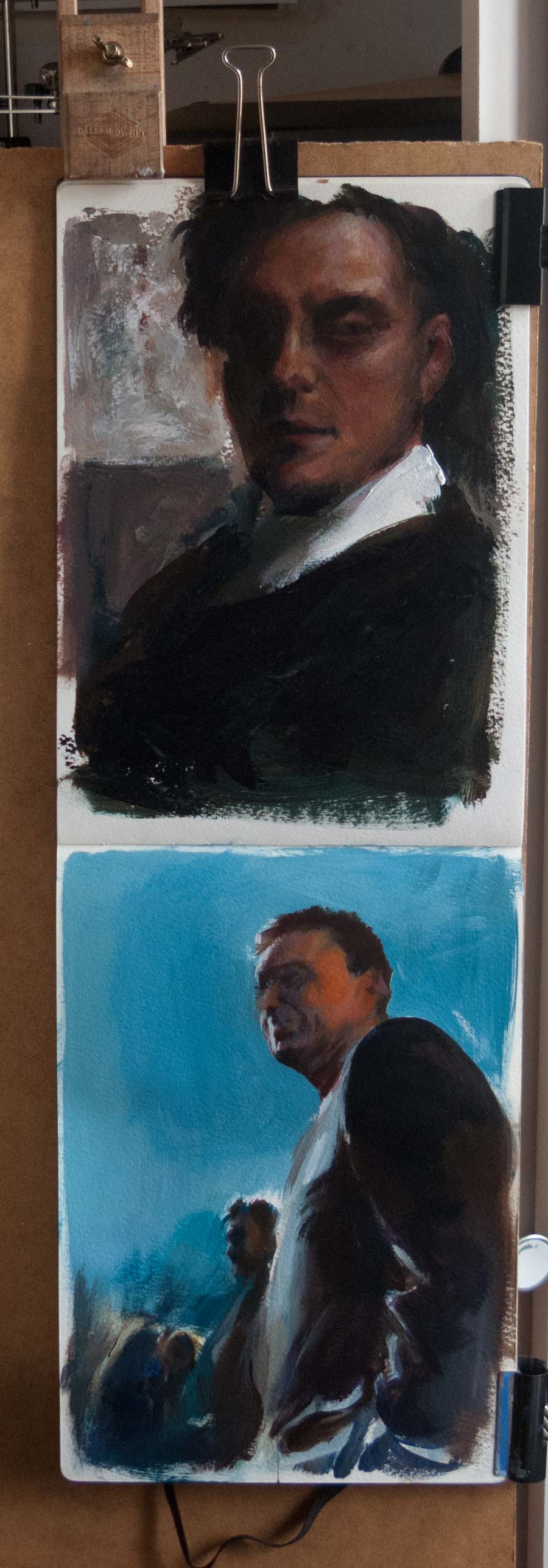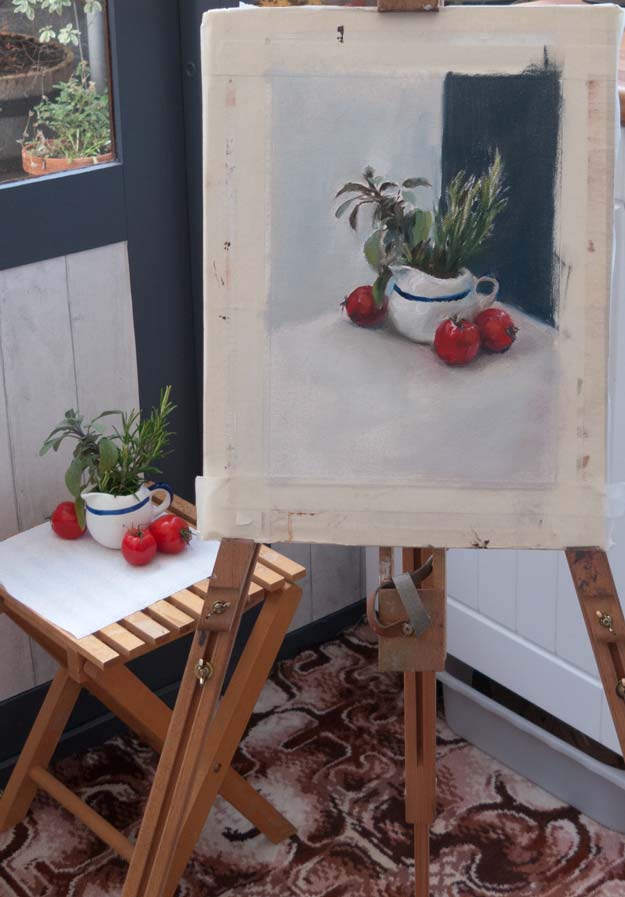The blank page can be an intimidating thing, especially when it’s a large blank page of good quality watercolour paper in an expensive A4 Moleskine sketchbook. The solution, of course, is to fill it with exquisite, delicate drawings of your best work. And that is why this sketchbook sat untouched on a shelf for many months… until I decided to strap it to an easel and attack it with large, cheap brushes loaded with acrylic paint.
It turned out to be ideal for these bold experiments: the large size gives some room for manoeuvre, and the thick watercolour paper can take the abuse without buckling.
The top picture is a rather dark version of a portrait of Louis Betts (without his glasses) by William Merritt Chase. The one below is based on a snapshot taken at a wedding. I often use photos for reference, but this somehow feels like it could never look like anything but a painting of a photo, no matter how I handled the paint. There’s something about the crop and angle of the picture which gives it away.
Comparing Louis Bett’s collar with the front of the wedding suit reminds me of a lesson in James Gurney’s book Colour and Light where he demonstrates how black surfaces in light can often appear lighter than white surfaces in shade.


